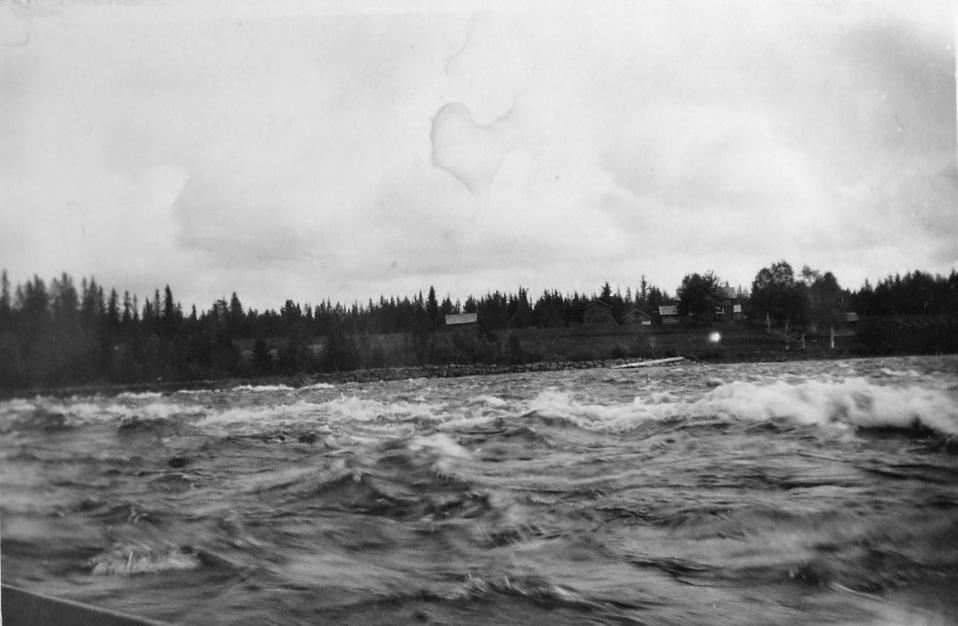The Chain of Rapids at Pyhäkoski and Its Geological Significance
Pyhäkoski has been one of Finland’s largest and the most famous rapids on the Oulujoki River. However, Pyhäkoski was not just a single rapid—it was actually a chain of rapids. Altogether, Pyhäkoski stretched about 20 kilometers in length, with a total drop of nearly 60 meters.
The water flows through a deep fracture in the bedrock at Pyhäkoski. The edges of this fracture were exposed during the Ice Age, and in places, they border the Oulujoki as nearly vertical cliffs. This ancient bedrock is granite. In typical fashion for the area, the granite is reddish, sometimes salmon-colored.
Among geologists, the reddish granite found in the Muhos area is known as Pyhäkoski granite. It is an ancient type of rock that formed nearly two billion years ago. Pyhäkoski granite crystallized slowly from molten rock—magma—deep beneath a large mountain range at about 20 kilometers depth. When the mountain ranges eroded away over millions of years, the granite was exposed at the Earth’s surface. Erosion has worn away kilometers of soil and rock above the granite.
Along Pyhäkoski, there were several waterfalls separated by calm pools. Even within the main Pyhäkoski rapid, there were many smaller rapids or chutes, such as Siltakorva, Louhenkorva, Leppikorva, and Rakankallio. Rakankallio was feared by log drivers in the 18th and 19th centuries—it was so powerful and demanding that it was avoided by detouring far around Leppiniemi, brushing along the shoreline rocks.


